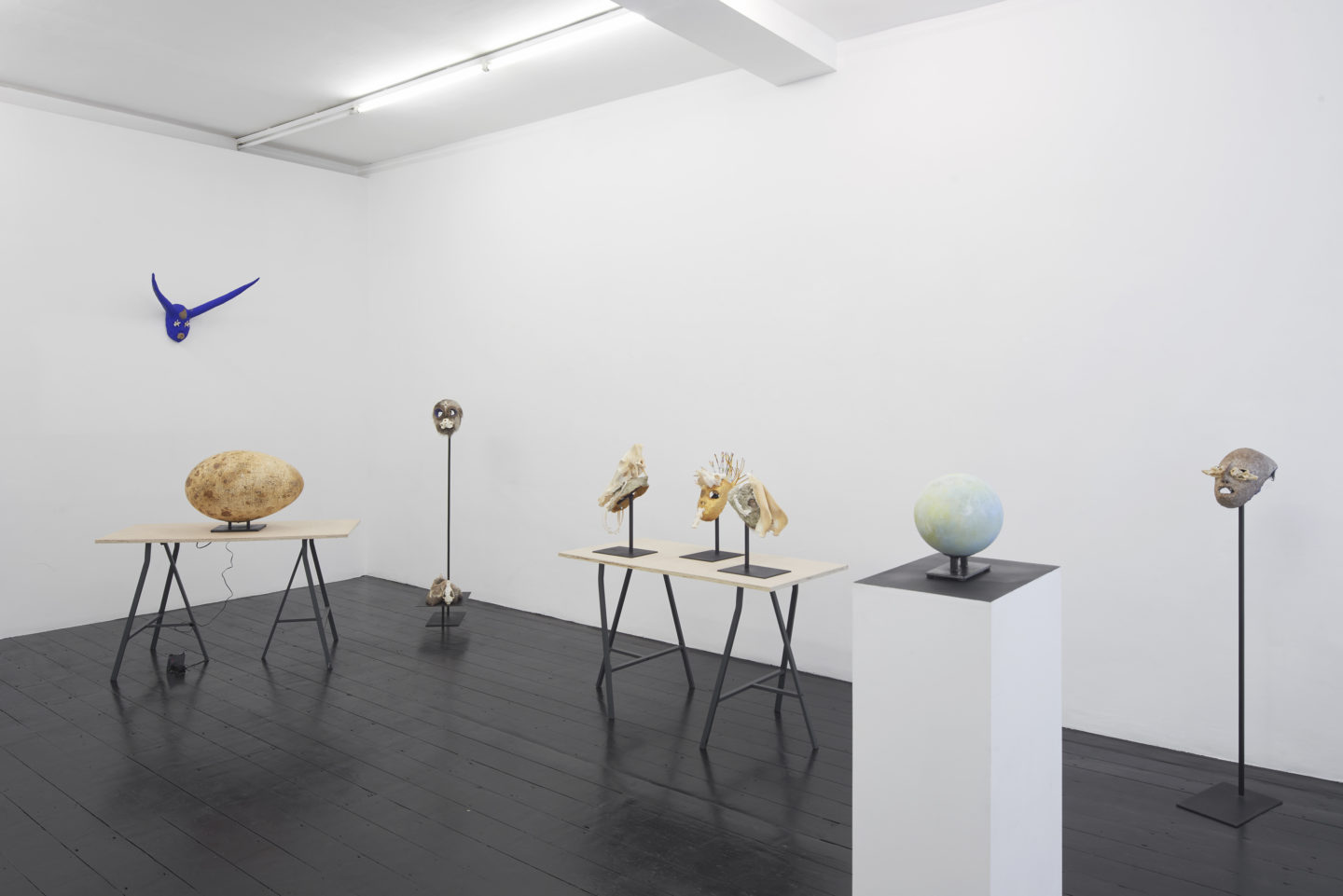Joanna Rajkowska: The Failure of Mankind
2019,
Review by Anna Souter
This is Tomorrow

Joanna Rajkowska: The Failure of Mankind
l’étrangère
18 September – 31 October 2019
Review by Anna Souter
The works do not refer to specific species or even groups of animals, instead suggesting hybridity. In the masks, bird-like beaks are created through reused rodent skulls, for instance, and bright blue horns sit above a semi-human face with vertebrae for eyes. There is a feeling of folk art, of magic and ritual. Whereas much recent eco-art adopts a data-driven approach or a technological aesthetic, Rajkowska instead encourages viewers to use their sensory imagination to explore ways of getting beyond the scientific or philosophical confines of the human mind and body, and to recognise a sense of open-ended shared identity with nonhumans.
The sensorium is also evoked by two works in the show which follow more closely in the footsteps of ‘The Hatchling’. Visitors can touch these hand-painted eggs and reach underneath to find a small button which, when pressed, produces the sounds of an unborn baby bird. The press of ear to artwork suggests a direct bodily connection to the imagined animal inside.
In the second room of the exhibition, the egg shape takes on a slightly different meaning, suggesting a fluidity and flexibility to Rajkowska’s worldview and modes of working. These collages on paper present images from the industrial revolution pasted onto an ovoid shape, which has come to indicate a distorted globe; the world pulled out of shape by the destructive actions of human beings.
In ‘The Failure of Mankind’, Joanna Rajkowska indicates how humans have failed the natural world – and, ultimately, themselves. But she also suggests how we might act before it’s too late: by finding ways to understand nonhuman lives and, above all, by finding ways to empathise.